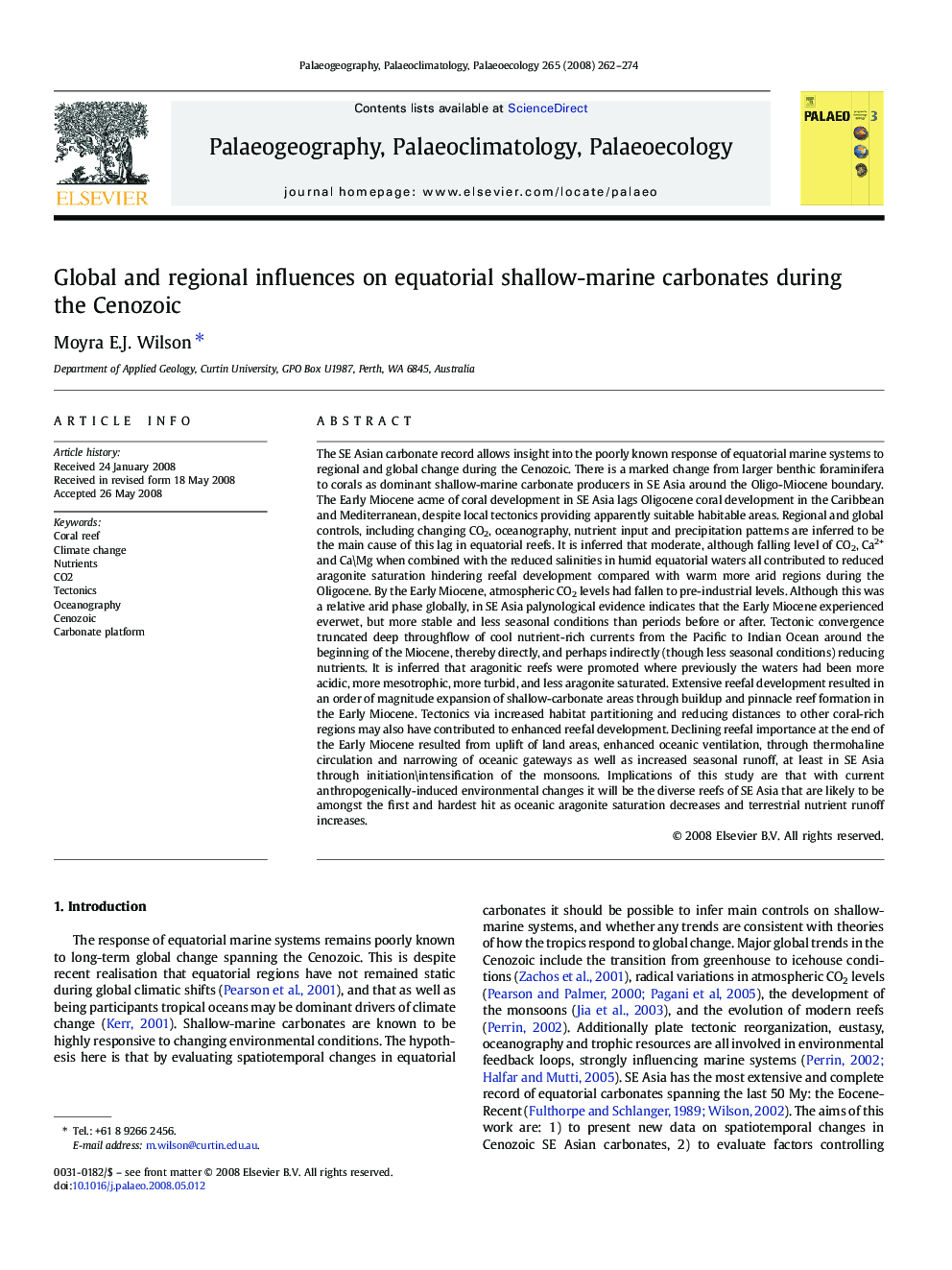| کد مقاله | کد نشریه | سال انتشار | مقاله انگلیسی | نسخه تمام متن |
|---|---|---|---|---|
| 4468485 | 1622323 | 2008 | 13 صفحه PDF | دانلود رایگان |

The SE Asian carbonate record allows insight into the poorly known response of equatorial marine systems to regional and global change during the Cenozoic. There is a marked change from larger benthic foraminifera to corals as dominant shallow-marine carbonate producers in SE Asia around the Oligo-Miocene boundary. The Early Miocene acme of coral development in SE Asia lags Oligocene coral development in the Caribbean and Mediterranean, despite local tectonics providing apparently suitable habitable areas. Regional and global controls, including changing CO2, oceanography, nutrient input and precipitation patterns are inferred to be the main cause of this lag in equatorial reefs. It is inferred that moderate, although falling level of CO2, Ca2+ and Ca\Mg when combined with the reduced salinities in humid equatorial waters all contributed to reduced aragonite saturation hindering reefal development compared with warm more arid regions during the Oligocene. By the Early Miocene, atmospheric CO2 levels had fallen to pre-industrial levels. Although this was a relative arid phase globally, in SE Asia palynological evidence indicates that the Early Miocene experienced everwet, but more stable and less seasonal conditions than periods before or after. Tectonic convergence truncated deep throughflow of cool nutrient-rich currents from the Pacific to Indian Ocean around the beginning of the Miocene, thereby directly, and perhaps indirectly (though less seasonal conditions) reducing nutrients. It is inferred that aragonitic reefs were promoted where previously the waters had been more acidic, more mesotrophic, more turbid, and less aragonite saturated. Extensive reefal development resulted in an order of magnitude expansion of shallow-carbonate areas through buildup and pinnacle reef formation in the Early Miocene. Tectonics via increased habitat partitioning and reducing distances to other coral-rich regions may also have contributed to enhanced reefal development. Declining reefal importance at the end of the Early Miocene resulted from uplift of land areas, enhanced oceanic ventilation, through thermohaline circulation and narrowing of oceanic gateways as well as increased seasonal runoff, at least in SE Asia through initiation\intensification of the monsoons. Implications of this study are that with current anthropogenically-induced environmental changes it will be the diverse reefs of SE Asia that are likely to be amongst the first and hardest hit as oceanic aragonite saturation decreases and terrestrial nutrient runoff increases.
Journal: Palaeogeography, Palaeoclimatology, Palaeoecology - Volume 265, Issues 3–4, 11 August 2008, Pages 262–274